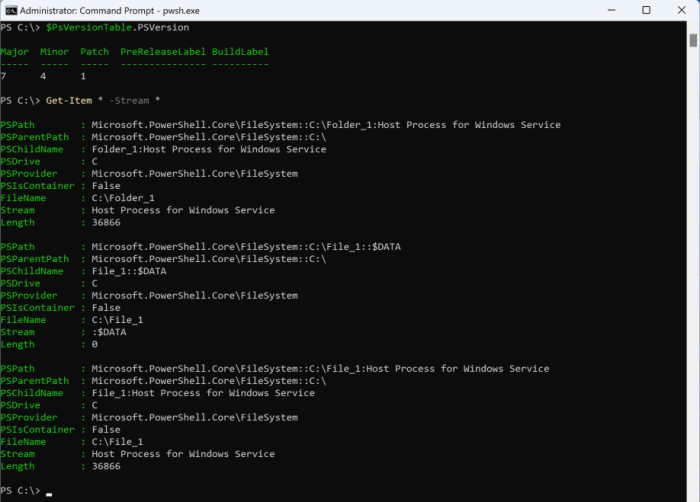Anatomy of Alpha Spider ransomware, a potent cyber threat, is dissected in this comprehensive exploration. We’ll uncover the malware’s history, infection methods, technical intricacies, and the devastating consequences of an attack. From its encryption techniques to the evolving tactics employed, this analysis delves deep into the inner workings of this ransomware family, providing critical insights for prevention and mitigation strategies.
This detailed overview will explore the various facets of Alpha Spider ransomware, examining its impact on businesses and individuals. We’ll analyze the technical characteristics, such as its encryption algorithms and control infrastructure. Moreover, the financial, operational, and reputational ramifications of an attack will be thoroughly discussed, followed by practical mitigation strategies and a comprehensive forensic analysis.
Introduction to Alpha Spider Ransomware
Alpha Spider ransomware is a relatively recent threat in the cybercrime landscape, emerging as a potent tool for malicious actors targeting various organizations. Its modus operandi involves encrypting critical data on victim systems, demanding a ransom payment for its release. Understanding its characteristics and tactics is crucial for developing effective defense strategies.
Description of Alpha Spider Ransomware
Alpha Spider ransomware is a sophisticated piece of malware characterized by its encryption capabilities and sophisticated attack strategies. It typically targets sensitive data on victims’ systems, rendering it inaccessible until a ransom is paid. The malware is designed to be highly adaptable and resilient, allowing attackers to maintain their control and inflict maximum damage.
History and Evolution of Alpha Spider
The precise origin and evolution of Alpha Spider remain somewhat shrouded in secrecy. However, emerging evidence points to its development and deployment within a relatively short timeframe. Early versions of the malware appear to have focused on specific industries, while later iterations demonstrate a broader attack surface. This evolving nature highlights the ongoing development and refinement of this ransomware.
Infection Vector
Alpha Spider, like many other ransomware strains, often leverages phishing emails as a primary infection vector. These emails typically contain malicious attachments or links that, when clicked, trigger the download and execution of the ransomware. Spearphishing campaigns, specifically targeting high-value individuals or departments within an organization, also appear to be a prevalent tactic employed by Alpha Spider operators.
Other vectors include exploit kits and vulnerable software, highlighting the multifaceted approach used by attackers.
Industries and Targets Affected
Alpha Spider ransomware has shown a notable interest in various sectors. Early reports suggest a concentration on healthcare organizations, but later campaigns have expanded to include financial institutions, government agencies, and even critical infrastructure providers. The adaptability of the malware allows it to target a wide range of organizations, indicating a general focus on high-value data.
Comparison to Other Ransomware Families
| Feature | Alpha Spider | REvil | LockBit | Conti |
|---|---|---|---|---|
| Encryption Method | Advanced encryption algorithms, potentially utilizing multiple layers of encryption | Strong encryption algorithms, often employing a modular approach | Robust encryption algorithms, often incorporating data exfiltration | Strong encryption algorithms, with a focus on data encryption and exfiltration |
| Data Exfiltration | Potentially includes data exfiltration, though the extent is not always evident | Extensive data exfiltration is a core component of the attack | Data exfiltration is a key tactic | Data exfiltration is a prominent feature |
| Targeting | Diverse range of industries, with a focus on high-value data | Historically focused on larger organizations and high-value targets | Targets diverse industries, but with a preference for large organizations | Targets large organizations and government entities |
| Ransom Demands | Varying, likely influenced by the value of the encrypted data | Typically large and escalating, often with explicit demands | Significant ransom demands, with a notable increase over time | Significant ransom demands, frequently coupled with data leak threats |
The table above provides a concise overview of Alpha Spider in comparison to other prominent ransomware families. It highlights key similarities and differences in their operational characteristics. Understanding these nuances is essential for developing effective defensive strategies against this evolving threat.
Technical Characteristics of Alpha Spider: Anatomy Of Alpha Spider Ransomware
Alpha Spider ransomware, a relatively recent threat, demonstrates a sophisticated approach to data encryption and exfiltration. Understanding its technical characteristics is crucial for developing effective mitigation strategies. Its actions, though potentially harmful, offer insights into evolving ransomware tactics.
Encryption Techniques
Alpha Spider employs advanced encryption algorithms, likely AES-256 or similar, to render victim files inaccessible. This encryption process often involves encrypting files in various formats and locations within a system. The chosen algorithms provide a strong level of security, making manual decryption extremely challenging without the proper decryption key. The complexity of the encryption process contributes to the ransomware’s effectiveness.
Data Exfiltration
While the primary focus of Alpha Spider appears to be data encryption, there’s potential for data exfiltration as well. The methods used for this are not publicly documented, and the extent of data theft remains uncertain. However, the possibility exists that stolen data is used for further malicious purposes, such as blackmail or sale on the dark web.
Propagation Methods
Alpha Spider likely leverages common methods for spreading throughout a network, such as exploiting vulnerabilities in software, using phishing emails, or leveraging compromised accounts. Successful propagation relies on the exploitation of security weaknesses within the target environment, highlighting the importance of proactive security measures.
Command and Control (C&C) Infrastructure
The C&C infrastructure for Alpha Spider is likely hosted on a network of compromised servers. These servers facilitate communication between the infected systems and the attackers. The use of such infrastructure enables attackers to control and manage the infection process, as well as to collect data from infected machines.
Technical Components
Alpha Spider likely consists of various components, including an encryption module, a communication module for interacting with the C&C server, and a payload module to deploy its malicious actions. The complex interaction of these components makes analysis and mitigation challenging.
Technical Specifications and Features, Anatomy of alpha spider ransomware
| Feature | Description |
|---|---|
| Encryption Algorithm | Likely AES-256 or similar |
| Data Exfiltration | Potentially used, but not publicly documented |
| Propagation Methods | Exploiting vulnerabilities, phishing, compromised accounts |
| C&C Infrastructure | Likely hosted on a network of compromised servers |
| Technical Components | Encryption module, communication module, payload module |
| Impact | Data encryption, potential data exfiltration |
Impact and Consequences of Alpha Spider Attacks
Alpha Spider ransomware, like other sophisticated strains, inflicts significant damage on its victims. Beyond the immediate encryption of data, the repercussions extend to financial losses, operational disruptions, and reputational damage. Understanding these multifaceted consequences is crucial for organizations to prepare for and mitigate the risks associated with such attacks.
Financial Implications
The financial burden of an Alpha Spider attack can be substantial. Organizations face costs associated with ransom payments, often demanded in cryptocurrency. These payments, while often the most publicized aspect, are just a portion of the total financial hit. Significant resources are required for incident response, data recovery, legal consultations, and potentially regulatory fines. The cost of lost productivity, including downtime and employee compensation, can be equally, if not more, impactful.
Furthermore, the costs associated with rebuilding systems and processes, implementing security improvements, and reputational damage further contribute to the overall financial strain.
Understanding the anatomy of Alpha Spider ransomware is crucial for cybersecurity. It often leverages vulnerabilities, similar to how USB-C ports, with their versatile connectivity, can be used for both data transfer and charging, which is detailed in everything you need know about usb c. This adaptability, while beneficial, can be exploited. Knowing the intricacies of Alpha Spider’s methods is key to prevention.
Operational Disruptions
Alpha Spider ransomware attacks cause extensive operational disruptions. The encryption of critical business data renders systems inoperable, halting essential functions. Production lines grind to a halt, supply chains are disrupted, and customer service is compromised. The inability to access crucial data and applications severely impacts an organization’s ability to fulfill its commitments, leading to lost revenue and potential contractual penalties.
This disruption can have cascading effects, impacting the entire business ecosystem.
Reputational Damage
A successful Alpha Spider attack can inflict severe reputational damage. The breach and subsequent data compromise often lead to loss of customer trust and confidence. Customers may fear the security of their personal information, and the public perception of the affected organization can be negatively impacted. This can translate into a loss of future business opportunities, as potential clients and partners may be hesitant to work with a company that has demonstrated a vulnerability to cyberattacks.
The reputational damage can linger for an extended period, significantly affecting the organization’s brand image.
Legal and Regulatory Ramifications
Victims of Alpha Spider ransomware attacks may face legal and regulatory ramifications. Data breaches, especially those affecting sensitive customer data, can trigger investigations and penalties under various data protection regulations. Failure to comply with data privacy laws can lead to substantial fines and legal action. The legal and regulatory processes involved can be complex and costly, adding further stress to the already challenging situation.
Data Recovery Challenges
Data recovery after an Alpha Spider attack is often a complex and arduous process. The encryption employed by the ransomware makes it difficult, if not impossible, to restore data without a decryptor. Even with a decryptor, restoring the data to its original state and ensuring its integrity can be a significant challenge. Data backups, if not properly maintained and tested, may not be sufficient to fully recover critical information, resulting in significant data loss.
The time and resources required for data recovery can be substantial, and the outcome may not always be complete. Furthermore, the risk of data corruption or undetected issues during recovery necessitates careful planning and execution.
Comparison of Ransomware Attack Financial Losses
| Ransomware Attack | Estimated Financial Loss (USD) | Description |
|---|---|---|
| WannaCry | Estimated $4 billion | Global ransomware attack targeting healthcare and other critical infrastructure. |
| NotPetya | Estimated $10 billion | Widespread attack with significant disruption to global supply chains and operational systems. |
| Ryuk | Variable, but frequently high | Sophisticated ransomware targeting large enterprises, with significant recovery costs. |
| Alpha Spider | Variable, depending on victim’s size and affected systems | Targeting organizations of various sizes, causing disruptions to critical operations and financial losses. |
The table above provides a comparative overview of estimated financial losses from several prominent ransomware attacks. Note that precise figures are often difficult to obtain, and the true cost of an attack often goes beyond the immediate ransom demand.
Digging into the anatomy of Alpha Spider ransomware reveals a sophisticated attack vector. While this malware’s intricate design is concerning, it’s interesting to note that Hawaii recently became the first US state to set a smoking age limit of 21, a noteworthy public health initiative. This focus on protecting future generations from harmful habits mirrors the need to understand and mitigate the risks posed by cyber threats like Alpha Spider, which can wreak havoc on individuals and organizations.
Mitigation Strategies and Prevention

Alpha Spider ransomware poses a significant threat to organizations, impacting their operations and financial stability. Implementing robust mitigation strategies is crucial for preventing infections and minimizing the damage caused by this sophisticated malware. Effective prevention relies on a multi-layered approach encompassing strong endpoint security, regular backups, proactive incident response, and comprehensive security awareness training.Effective countermeasures against Alpha Spider ransomware involve a proactive, layered defense approach, addressing vulnerabilities across various stages of the attack lifecycle.
By combining robust security protocols and employee training, organizations can significantly reduce their risk profile and safeguard their sensitive data.
Strong Endpoint Security Solutions
Endpoint security solutions play a critical role in preventing ransomware attacks. These solutions provide a layered defense, incorporating features like advanced threat detection, real-time malware scanning, and intrusion prevention systems. Implementing these solutions effectively reduces the likelihood of successful attacks by proactively identifying and blocking malicious code. Advanced endpoint detection and response (EDR) solutions can further assist in quickly isolating and remediating compromised systems.
Regular Data Backups and Recovery Procedures
Regular data backups are a cornerstone of ransomware protection. Creating offline backups, preferably stored in a secure offsite location, ensures data recovery even if the primary system is compromised. Having a documented recovery plan in place ensures a swift and efficient recovery process in the event of an attack. Test the backup and recovery process regularly to ensure its efficacy.
Steps for Incident Response in Case of an Alpha Spider Attack
A well-defined incident response plan is critical for handling an Alpha Spider attack. This plan should Artikel the steps to take immediately upon discovering an attack, including isolating infected systems, containing the spread of the malware, and initiating data recovery procedures. Collaboration between IT security teams and other relevant departments is essential for a coordinated response.
Security Awareness Training
Security awareness training empowers employees to recognize and report suspicious activities, thus acting as a critical first line of defense against ransomware attacks. Training should cover topics such as phishing scams, recognizing malicious attachments, and safe browsing practices. Regular refresher training is crucial to maintain a high level of awareness.
Methods of Preventing Alpha Spider Attacks
| Prevention Method | Description |
|---|---|
| Strong Endpoint Security | Implementing advanced threat detection, real-time malware scanning, and intrusion prevention systems on all endpoints. |
| Regular Data Backups | Creating offline backups and storing them in a secure offsite location. Regularly testing the backup and recovery process. |
| Incident Response Plan | Developing and regularly testing a documented incident response plan that Artikels steps to take upon discovering an attack, including isolating infected systems, containing the spread of the malware, and initiating data recovery procedures. |
| Security Awareness Training | Providing comprehensive security awareness training to employees on recognizing phishing scams, malicious attachments, and safe browsing practices. Regularly conducting refresher training. |
Forensic Analysis of Alpha Spider
Alpha Spider ransomware, like other sophisticated threats, demands meticulous forensic analysis to recover encrypted data and understand the extent of the attack. This process is crucial for incident response, legal proceedings, and preventing future breaches. A thorough forensic examination uncovers the infection vector, the methods employed, and the scope of data compromised, ultimately enabling informed mitigation strategies.Forensic analysis of Alpha Spider infections involves a systematic approach to identifying, documenting, and analyzing evidence to understand the attack and its impact.
This includes the examination of infected systems, the recovery of encrypted data, and the analysis of the ransomware itself. A robust forensic methodology ensures that critical information is preserved and analyzed accurately, providing valuable insights for incident response teams.
Identifying the Presence of Alpha Spider
Initial steps in forensic analysis focus on identifying the presence of Alpha Spider ransomware. This involves checking for specific file extensions, registry keys, and process activities associated with the malware. Careful examination of system logs and event viewer entries is crucial to pinpoint the infection time and any related suspicious activities. Analysis of network traffic can also reveal communication patterns and data exfiltration attempts.
Steps to Perform a Forensic Analysis of Infected Systems
A structured approach to forensic analysis ensures the preservation of evidence and the accurate recovery of information. This involves isolating the infected system to prevent further data alteration. Creating a forensic image of the hard drive is critical to maintain a pristine copy of the system’s state at the time of the incident. This process ensures that the original data remains untouched during the analysis.
Careful documentation of every step, including timestamps, is essential for maintaining a detailed record of the investigation.
Tools Used for Analyzing the Malware
Several tools can aid in analyzing the Alpha Spider ransomware. These tools can be categorized into general forensic tools, such as Autopsy and Sleuth Kit, and specialized tools for malware analysis. The use of a combination of these tools ensures a comprehensive understanding of the malware’s functionalities and behavior. The use of reverse engineering tools is critical for understanding the internal workings of the ransomware, enabling the identification of encryption keys and decryption techniques.
Extracting and Analyzing Encrypted Data
The extraction of encrypted data is a complex task. Decryption techniques, if available, are applied to recover the data. If decryption is not possible, forensic analysis can still focus on identifying the encryption patterns and understanding the nature of the data loss. The analysis involves identifying the file types and the extent of the encryption, which helps in assessing the impact on the organization.
Preserving Evidence in an Investigation
Preservation of evidence is paramount in a ransomware investigation. This involves maintaining a chain of custody for all collected data and ensuring that no tampering occurs throughout the analysis. Thorough documentation of each step in the forensic process is essential to establish the validity of the findings. This includes documenting the tools used, the procedures followed, and the personnel involved in the investigation.
Tools and Techniques for Analyzing Alpha Spider Ransomware
| Tool/Technique | Description |
|---|---|
| File Extension Analysis | Identifying encrypted files by their new extensions. |
| Registry Key Analysis | Examining registry entries for malware presence and configuration. |
| Process Monitoring | Analyzing running processes to detect suspicious activities. |
| Network Traffic Analysis | Identifying network communications related to the attack. |
| Malware Analysis Tools (e.g., IDA Pro, Ghidra) | Disassembling and analyzing the malware’s code. |
| Forensic Imaging Software (e.g., FTK Imager) | Creating a bit-by-bit copy of the hard drive. |
| Data Carving Techniques | Recovering encrypted files from potentially damaged sectors. |
| Hashing and Comparison | Comparing hashes of files before and after encryption. |
Emerging Trends and Future Implications
The ransomware landscape is constantly evolving, and Alpha Spider ransomware is no exception. Understanding recent trends, evolving tactics, and potential future developments is crucial for effective defense strategies. This section delves into the emerging threats associated with Alpha Spider and how the ransomware landscape is changing with respect to this particular strain.
Recent Trends in Alpha Spider
Alpha Spider ransomware has shown a marked shift towards more sophisticated and targeted attacks. Instead of indiscriminate campaigns, operators are increasingly focusing on specific industries or organizations, demonstrating a clear understanding of their vulnerabilities and potential financial gain. This targeted approach indicates a move away from mass-infection strategies and towards a more calculated, financially motivated strategy.
Evolving Tactics, Techniques, and Procedures (TTPs)
The TTPs employed by Alpha Spider operators are constantly adapting. Initial access methods, data exfiltration techniques, and ransom demands are becoming more varied and complex. For instance, there’s a growing trend of using exploit kits to gain initial access, leveraging vulnerabilities in software applications to bypass traditional security measures. Furthermore, there’s a noticeable increase in the use of double extortion tactics, where stolen data is not only encrypted but also threatened with public release if the ransom isn’t paid.
This strategy significantly increases pressure on victims.
Unraveling the anatomy of Alpha Spider ransomware is fascinating, but equally intriguing is how tech companies are improving security. For instance, dissecting the inner workings of the Apple M1 MacBook Air Pro, as seen in the apple m1 macbook air pro ifixit teardown , offers insights into the evolving design of modern devices. Understanding these intricacies helps in recognizing the vulnerabilities that ransomware exploits, ultimately strengthening our defenses against these digital threats.
Potential Future Developments
Predicting the precise future of Alpha Spider is difficult, but several potential developments are plausible. One possibility is the emergence of specialized variants tailored to specific industries, like healthcare or finance, with customized attack vectors and ransom demands based on industry-specific data value. Another potential development is the integration of Alpha Spider with other malicious tools, creating a more comprehensive attack framework.
This might include leveraging tools for initial access, lateral movement, and data exfiltration within a compromised network. The rise of AI-powered ransomware tools also poses a significant threat, as AI could be used to enhance attack sophistication and target specific vulnerabilities in real-time.
Emerging Threats Associated with Alpha Spider
One emerging threat is the use of Alpha Spider to target critical infrastructure. This type of attack could have severe consequences, impacting essential services and potentially causing widespread disruption. Furthermore, the combination of Alpha Spider with supply chain attacks is another area of concern. Compromising a vendor or supplier could provide access to multiple organizations through a single point of entry.
This tactic could be particularly damaging due to the interconnected nature of modern supply chains.
Changing Ransomware Landscape
The ransomware landscape is evolving rapidly, with a growing emphasis on targeted attacks and sophisticated TTPs. This shift requires organizations to implement robust security measures and enhance their incident response capabilities. Alpha Spider’s adaptation to these changes is a clear indicator of the evolving threat landscape.
Changing TTPs of Alpha Spider
| Previous TTP | Current TTP | Potential Future TTP |
|---|---|---|
| Simple encryption and ransom demands. | Targeted attacks, double extortion, use of exploit kits. | Industry-specific variants, integration with other malicious tools, AI-powered attacks. |
| Mass-infection campaigns. | Focused attacks on specific industries or organizations. | Supply chain attacks, targeting critical infrastructure. |
Illustrative Case Studies (Conceptual)
Alpha Spider ransomware, with its sophisticated techniques, poses a significant threat to businesses and organizations of all sizes. Understanding how such an attack unfolds, and the subsequent steps taken to mitigate its impact, is crucial for effective preparedness. This section details conceptual case studies, demonstrating the attack lifecycle, forensic procedures, recovery strategies, and preventative measures.
Small Business Case Study
A hypothetical small business, “Acme Gadgets,” relies heavily on its digital systems for inventory management, customer relations, and financial transactions. A successful Alpha Spider attack could severely disrupt their operations.
Ransomware Incident Steps
- Compromise: A phishing email containing a malicious attachment or link is opened by an employee, unknowingly initiating the infection. Alpha Spider exploits vulnerabilities in the network to propagate throughout the system.
- Encryption: The ransomware encrypts critical data files on Acme Gadgets’ servers and workstations. This includes customer databases, financial records, and operational documents.
- Demand: A ransom note appears on affected systems, demanding a specific cryptocurrency payment in exchange for the decryption key.
- Impact: Acme Gadgets loses access to essential data, experiences operational disruptions, and faces significant financial losses due to downtime and potential legal liabilities.
Forensic Analysis Procedures
- Initial Assessment: Forensic investigators identify the extent of the infection, pinpoint the entry point, and analyze the encryption process. Tools are used to gather evidence from affected systems.
- Data Recovery Attempts: If possible, offline backups are checked for integrity and restore points. Data recovery tools are utilized to attempt recovery from backups.
- Evidence Collection: Detailed logs, system files, and network traffic are examined to identify the malware’s behavior and the attacker’s activities.
- Malware Analysis: The ransomware’s code is examined to determine its functionality, encryption algorithm, and potential weaknesses.
Data Recovery and Legal Aspects
- Data Recovery: Depending on the availability of backups, data recovery may involve restoring from backups, employing decryption tools, or employing data recovery specialists.
- Legal Considerations: Legal counsel is consulted to assess potential legal ramifications, including compliance with data breach notification laws and potential civil lawsuits. Financial and legal penalties could be substantial.
Healthcare Organization Case Study
A hypothetical healthcare organization, “Apex Medical,” faces significant challenges from an Alpha Spider attack. The sensitive nature of patient data amplifies the risks.
Preventive Measures
- Robust Cybersecurity Measures: Implementing multi-factor authentication, firewalls, intrusion detection systems, and regular security audits can deter attacks.
- Employee Training: Comprehensive training programs educate employees about phishing attempts, suspicious emails, and safe computing practices.
- Data Backup and Recovery Plan: Establishing a comprehensive data backup and recovery plan is essential for restoring data in case of an incident. Regular testing of the plan is critical.
- Incident Response Plan: Developing a detailed incident response plan Artikels the steps to be taken during a ransomware attack.
Key Steps Summary
| Scenario | Compromise | Encryption | Impact | Recovery | Prevention |
|---|---|---|---|---|---|
| Small Business | Phishing | Data Files | Operational Disruption | Backup Restoration | Security Training |
| Healthcare | Vulnerable Systems | Patient Data | Data Breach | Data Recovery, Legal Compliance | Robust Security |
End of Discussion

In conclusion, Alpha Spider ransomware presents a formidable challenge to cybersecurity. Understanding its anatomy, from its initial infection to the long-term consequences, is crucial for organizations and individuals. This comprehensive analysis provides a framework for recognizing the evolving threats posed by Alpha Spider and the necessity of robust security measures, proactive incident response plans, and ongoing vigilance in the ever-changing digital landscape.






